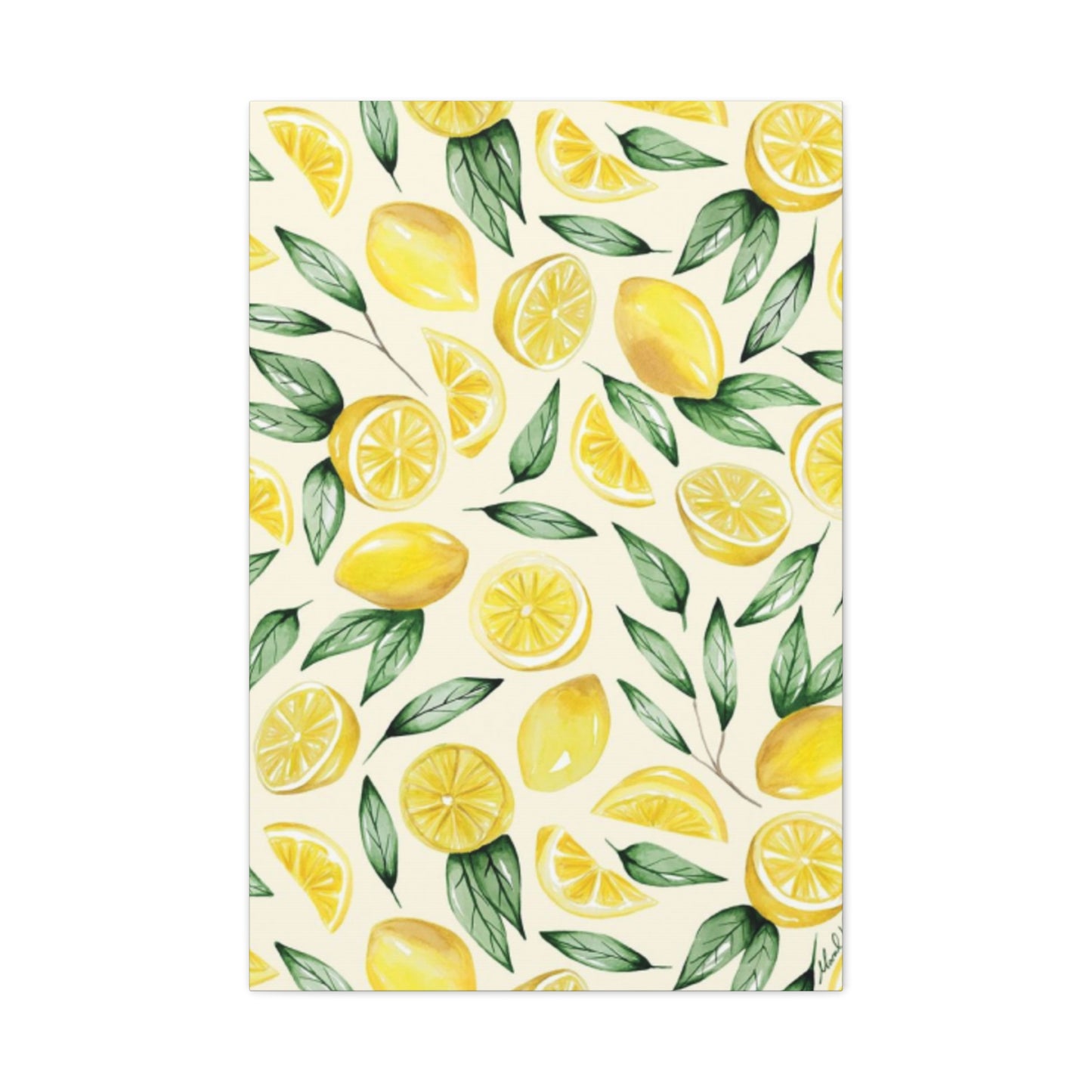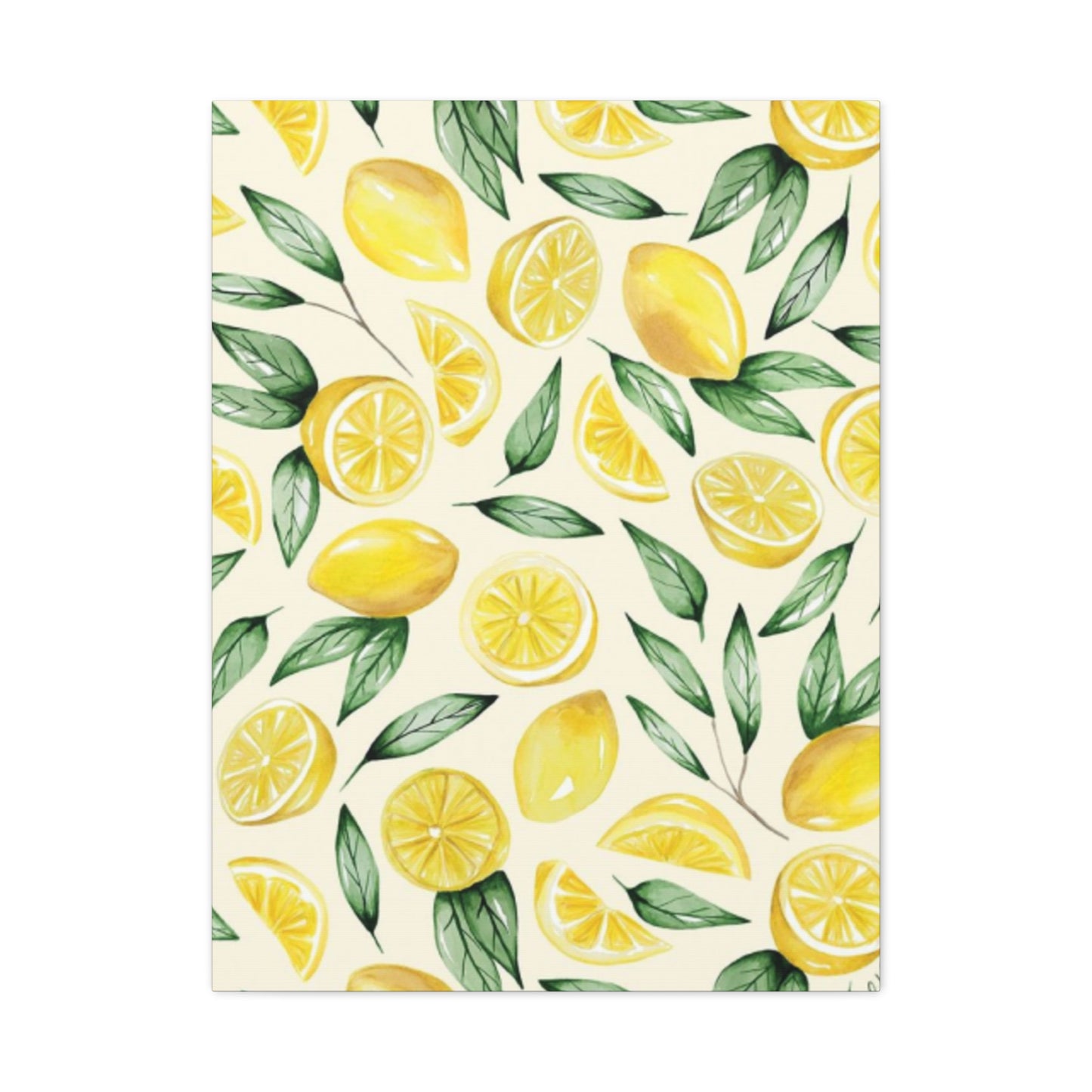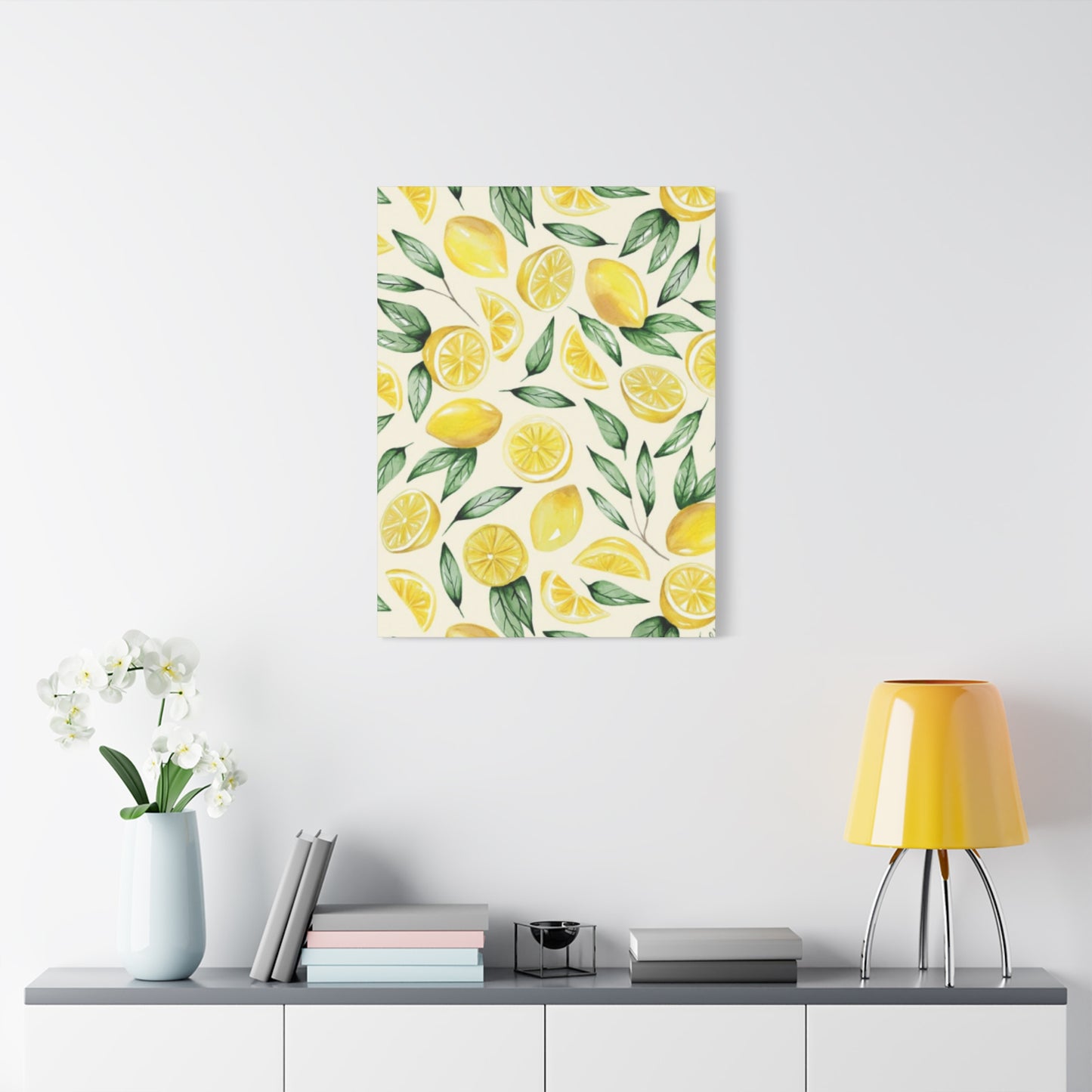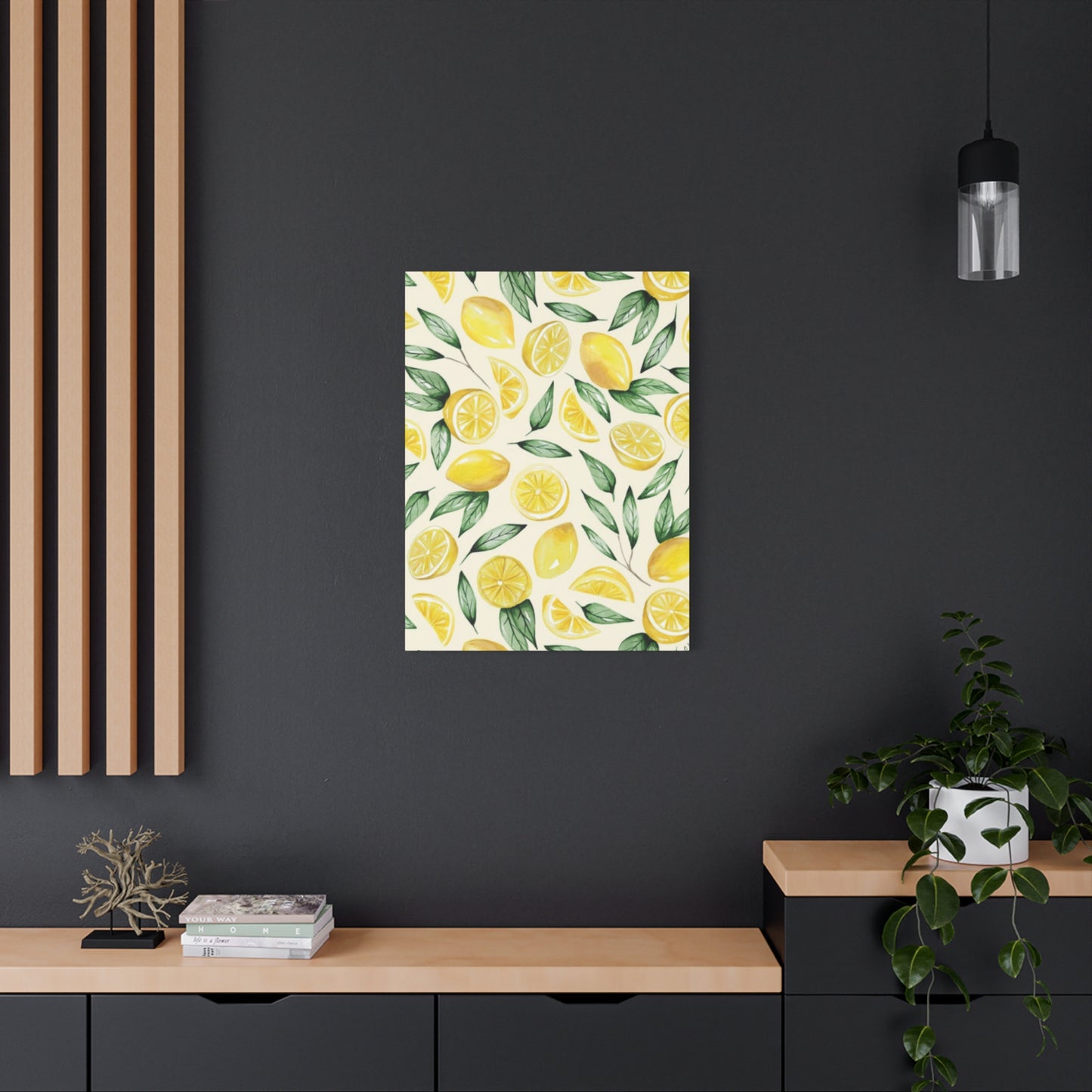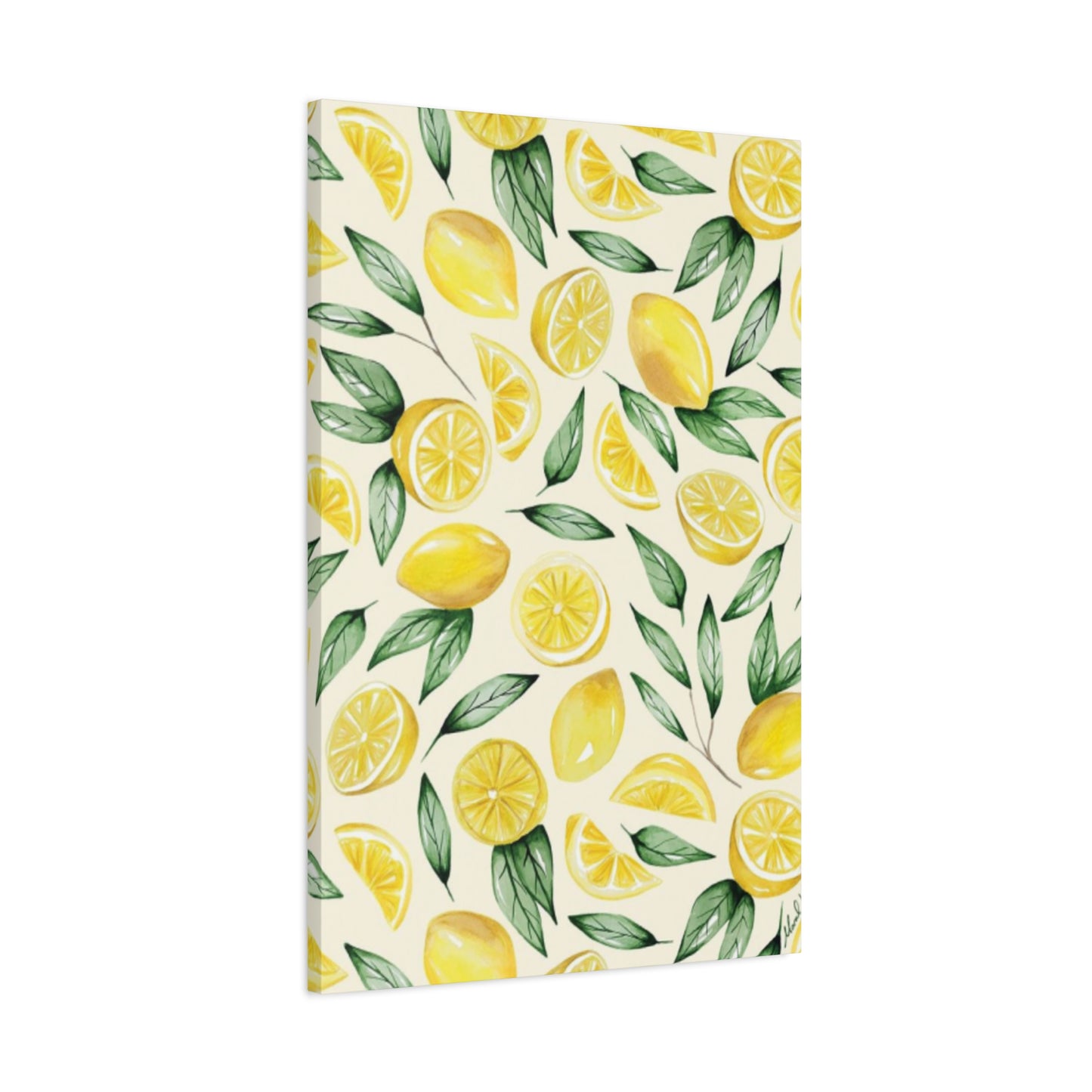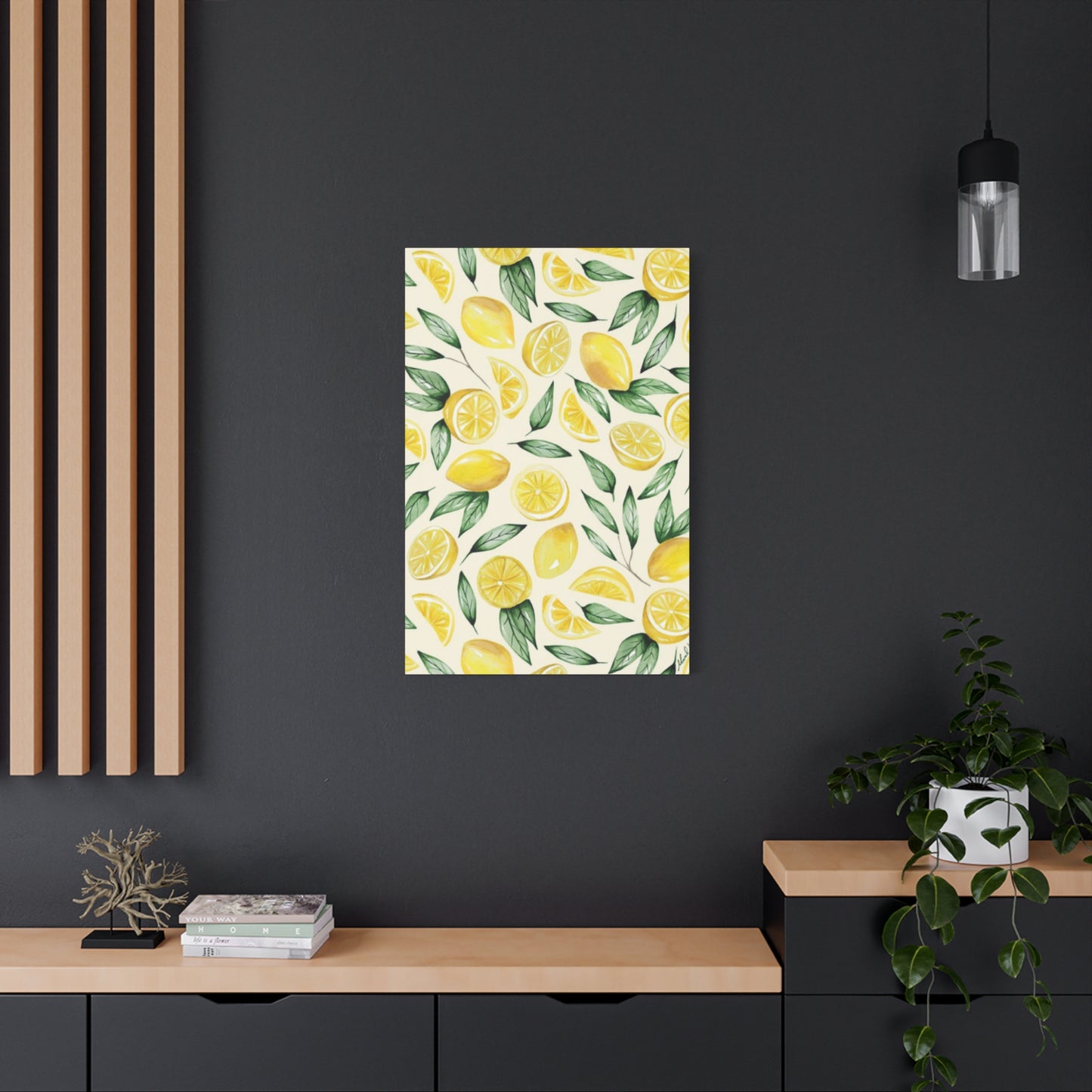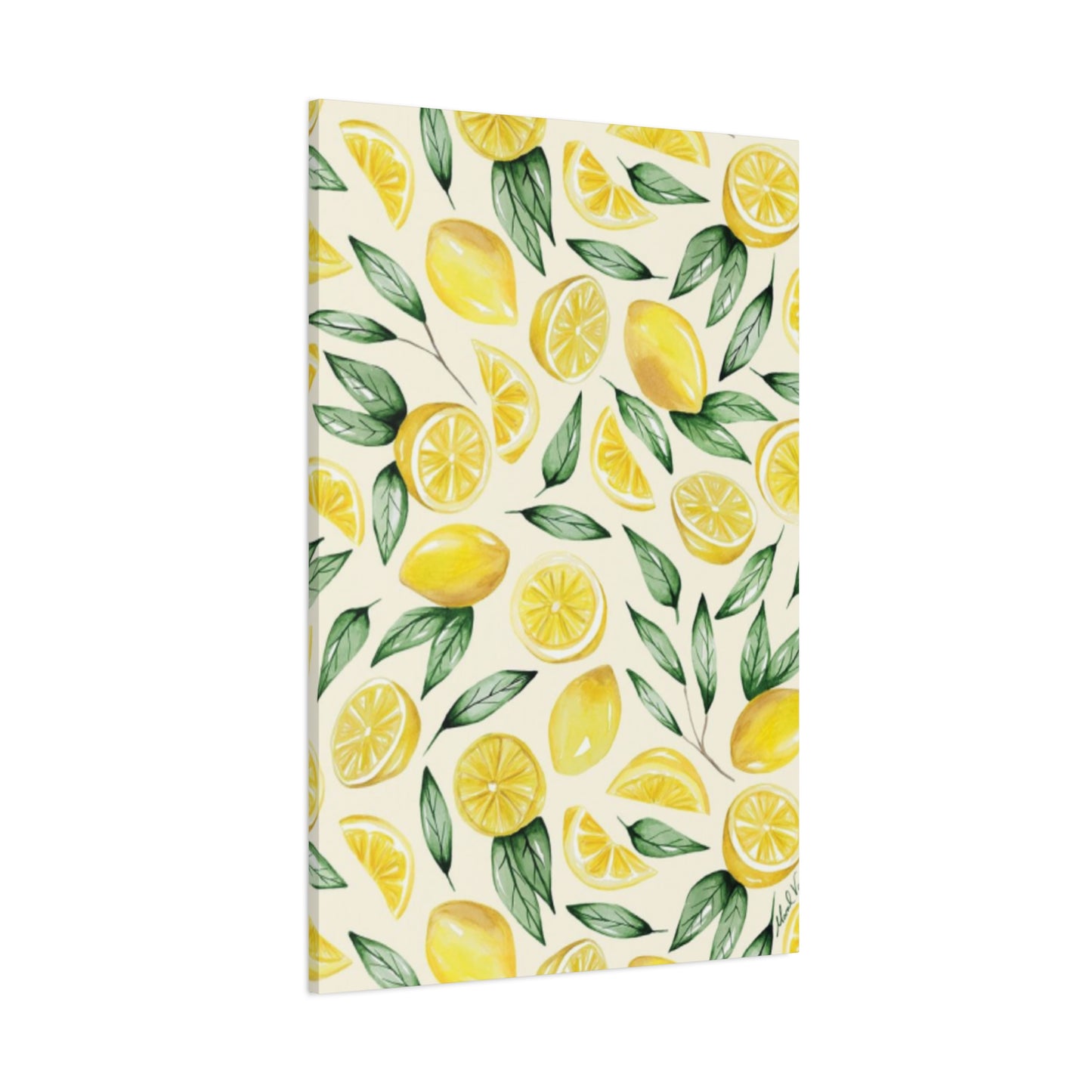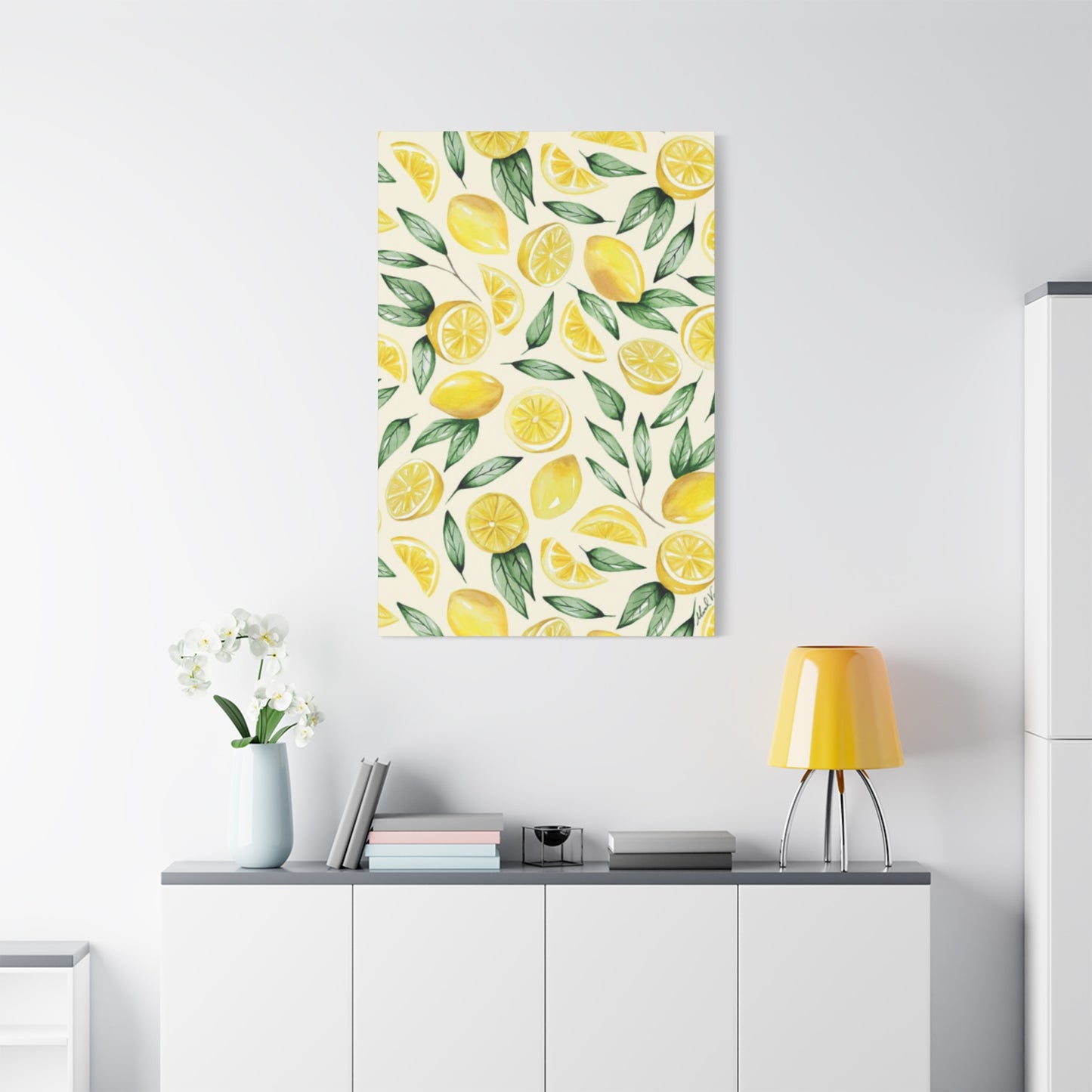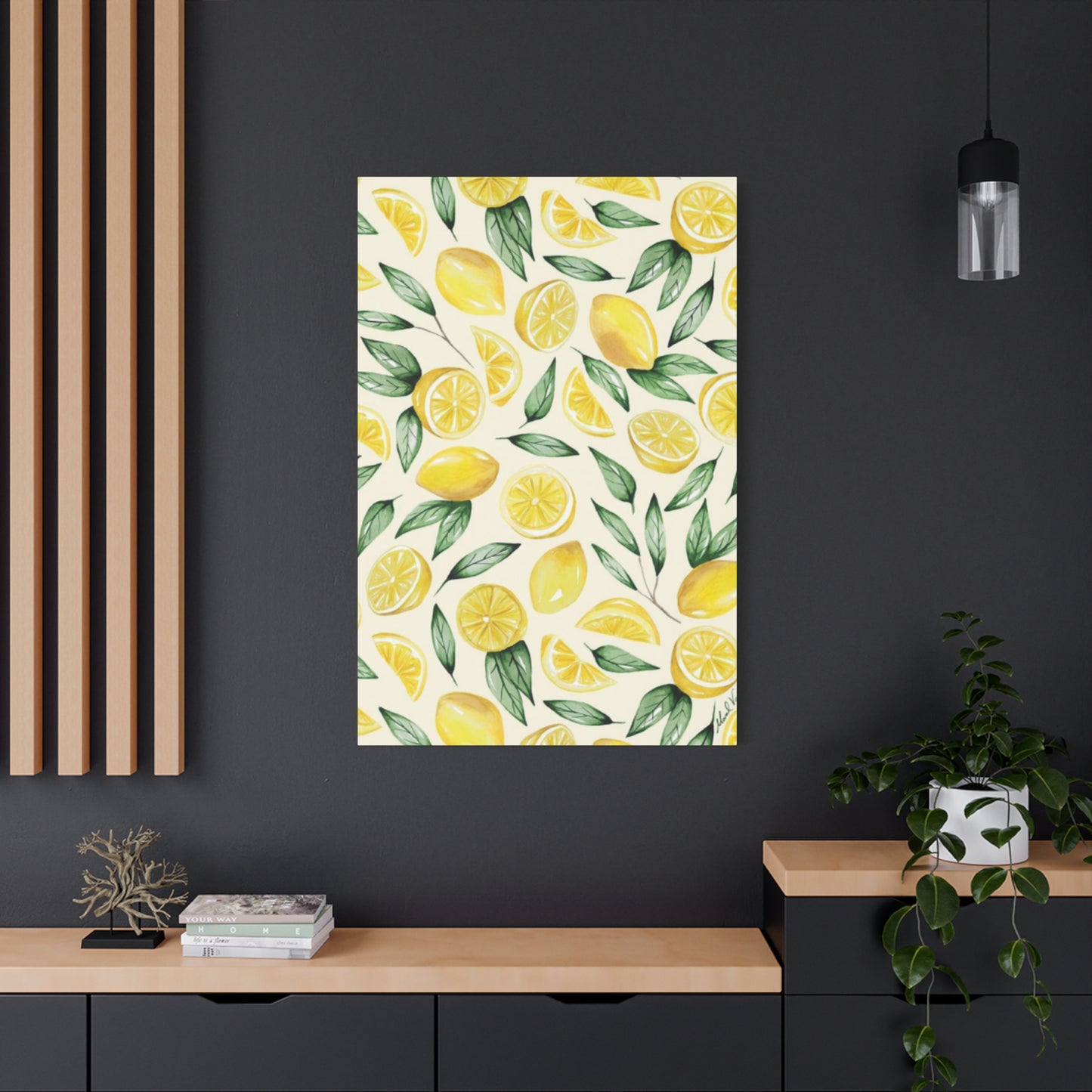Refreshing Lime Wall Art: Creative Citrus Decor Ideas for Your Home
The world of home decoration has embraced the vibrant and energizing qualities of citrus motifs, with lime-themed artwork becoming increasingly popular among homeowners and decorators alike. These refreshing visual elements bring natural beauty, bright colors, and a sense of vitality to any living environment. From professional establishments to personal residences, lime wall art has proven to be a versatile and appealing choice that transforms ordinary walls into dynamic focal points.
The appeal of citrus-inspired decorations stems from their ability to evoke feelings of freshness, cleanliness, and natural vitality. When incorporated thoughtfully into home décor schemes, these pieces create atmospheres that feel both sophisticated and welcoming. The natural green hues found in lime artwork complement a wide range of color palettes, making them suitable for various decorating styles and preferences.
Contemporary homeowners are increasingly drawn to artwork that reflects their lifestyle choices and personal tastes. Lime-themed pieces offer a unique combination of natural beauty and modern aesthetics that appeals to those seeking to create environments that feel both current and timeless. These decorative elements serve as conversation starters while contributing to the overall ambiance of any room.
Fresh and Zesty Lime Prints Transform Any Room
The charm of fresh and zesty lime prints lies in their ability to capture the essence of this beloved citrus fruit in artistic form. These prints showcase the natural beauty of limes through various artistic interpretations, from realistic photography to stylized illustrations. Each piece brings its own personality to the room while maintaining the refreshing quality that makes lime artwork so appealing.
Artists have discovered numerous ways to interpret the lime motif, creating pieces that range from simple, elegant representations to complex, multi-layered compositions. Some focus on the geometric patterns created by lime slices, while others explore the textural qualities of the fruit's skin or the play of light on its glossy surface. These varied approaches ensure that there are lime prints suitable for every taste and decorating style.
The versatility of lime prints allows them to work well in both traditional and contemporary settings. In more classical environments, they can provide a fresh update without overwhelming existing décor elements. In modern settings, they serve as perfect accents that complement clean lines and minimalist aesthetics. The natural green coloring works harmoniously with neutral palettes while adding just enough color to create visual interest.
When selecting lime prints for home decoration, consider the overall lighting in the chosen room. These pieces tend to work particularly well in areas with good natural light, where their fresh colors can be fully appreciated. However, they also perform admirably in artificially lit environments, where their bright appearance can help counteract any darkness or stuffiness.
The psychological impact of lime prints should not be underestimated. Research has shown that exposure to natural motifs and green colors can have calming and energizing effects on human psychology. These prints can help create environments that feel more connected to nature, even in urban settings where access to natural elements might be limited.
Bright Green Lime Canvas Art Creates Stunning Visual Impact
Bright green lime canvas art represents one of the most popular formats for citrus-themed home decoration. Canvas provides an excellent medium for showcasing the vibrant colors and intricate details that make lime artwork so compelling. The texture of canvas adds depth and dimension to the artwork, creating pieces that engage viewers on multiple sensory levels.
The durability of canvas makes it an excellent choice for long-term home decoration projects. Unlike paper prints, canvas artwork can withstand environmental changes and maintain its appearance over many years. This longevity makes canvas lime art a wise investment for homeowners who want to create lasting decorative schemes that will continue to provide enjoyment over time.
Artists working with canvas have the opportunity to experiment with various techniques and styles when creating lime-themed pieces. Some prefer photorealistic approaches that capture every detail of the fruit's surface, while others opt for more impressionistic interpretations that focus on color and form rather than precise representation. Both approaches can create stunning visual effects when properly executed.
The size flexibility offered by canvas makes it possible to create lime artwork that fits perfectly into any available wall opening. From small accent pieces that add subtle touches of color to large statement works that dominate entire walls, canvas lime art can be customized to meet specific decorating needs and preferences.
Color saturation plays a crucial role in the effectiveness of bright green lime canvas art. The best pieces achieve a balance between vibrancy and natural authenticity, creating colors that feel both exciting and believable. This balance ensures that the artwork remains visually appealing over time without becoming overwhelming or tiresome.
The framing options available for canvas lime art provide additional opportunities for customization. Simple, clean frames can emphasize the modern appeal of the artwork, while more ornate options can help integrate the pieces into traditional decorating schemes. Some homeowners prefer to display canvas art without frames, allowing the natural texture and edges of the canvas to become part of the overall aesthetic effect.
Citrus-Themed Wall Decor Brings Natural Beauty Indoors
Citrus-themed wall decor encompasses a broader category that includes lime artwork alongside representations of other citrus fruits. This approach allows for more complex and varied decorating schemes that can incorporate multiple fruit types while maintaining a cohesive overall theme. The combination of limes with lemons, oranges, and grapefruits creates rich, layered visual experiences that celebrate the entire citrus family.
The natural beauty of citrus fruits translates exceptionally well into home décor applications. Their bright colors, interesting shapes, and positive associations with health and vitality make them ideal subjects for artistic interpretation. When displayed as wall decor, these themes bring elements of nature indoors in ways that feel both sophisticated and accessible.
Citrus-themed decorating schemes work particularly well in areas of the home associated with food preparation and consumption. Kitchens, dining rooms, and breakfast nooks all benefit from the appetite-stimulating qualities of citrus imagery. However, these themes are not limited to food-related areas and can enhance living rooms, bedrooms, and even office environments.
The seasonal flexibility of citrus themes makes them suitable for year-round display. While they evoke summer freshness and outdoor dining experiences, they also provide welcome brightness during darker winter months. This versatility makes citrus-themed wall decor a practical choice for homeowners who prefer not to change their decorative schemes with the seasons.
Layering different types of citrus artwork can create depth and visual interest in decorating schemes. Combining lime pieces with complementary citrus themes allows for the creation of gallery walls or coordinated room designs that feel intentional and well-planned. The key to success lies in maintaining color harmony while introducing enough variety to keep the overall effect engaging.
The educational aspect of citrus-themed wall decor should not be overlooked, particularly in homes with children. These pieces can serve as starting points for discussions about nutrition, agriculture, and the natural world. They help create environments that celebrate healthy eating habits while providing attractive decoration.
Minimalist Lime Illustrations Appeal to Modern Sensibilities
Minimalist lime illustrations represent a sophisticated approach to citrus-themed home decoration that appeals particularly to those with contemporary design preferences. These pieces strip away unnecessary details to focus on the essential qualities that make lime imagery so compelling. The result is artwork that feels both modern and timeless, capable of enhancing sophisticated decorating schemes without overwhelming them.
The principles of minimalist design translate particularly well to lime artwork. The natural simplicity of the lime's form lends itself to clean, uncluttered artistic interpretations that emphasize shape, color, and composition over complex details. These pieces often feature plenty of white or neutral background areas that help them integrate seamlessly into modern living environments.
Minimalist lime illustrations work exceptionally well in groupings, where their clean lines and consistent aesthetic create pleasing patterns and rhythms. When displayed as series or collections, these pieces can transform entire walls into sophisticated design elements that serve as focal points for room design. The repetition inherent in such arrangements creates visual stability while maintaining interest through subtle variations.
The color palettes used in minimalist lime artwork tend toward the restrained end of the spectrum, featuring natural green tones accompanied by carefully chosen accent colors. This approach ensures that the pieces remain versatile and easy to coordinate with various decorating schemes. The subdued color choices also help the artwork maintain its appeal over time without becoming dated or tiresome.
Typography often plays a role in minimalist lime illustrations, where simple, elegant fonts might be used to incorporate text elements that enhance the overall message or theme. These textual additions are typically minimal and carefully integrated into the overall composition, maintaining the clean aesthetic while adding layers of meaning or information.
The printing techniques used for minimalist lime illustrations often emphasize clean lines and precise color reproduction. Digital printing methods allow for exceptional accuracy in reproducing the subtle color gradations and precise geometric forms that characterize the best minimalist artwork. This technical precision supports the overall aesthetic goals of the minimalist approach.
Lime Slice Patterns on Canvas Create Geometric Beauty
Lime slice patterns on canvas offer a unique approach to citrus-themed artwork that emphasizes the natural geometric qualities found in the fruit's cross-sectional appearance. When limes are sliced, they reveal intricate internal structures that create naturally occurring patterns of remarkable beauty and complexity. Artists have recognized these qualities and translated them into compelling canvas artwork that celebrates both natural beauty and geometric design principles.
The radial symmetry found in lime slices provides a foundation for artwork that appeals to viewers' innate attraction to balanced, harmonious compositions. These natural patterns have inspired artists to create pieces that range from realistic representations to highly stylized interpretations that emphasize the mathematical beauty inherent in natural forms. The resulting artwork bridges the gap between organic and geometric design elements.
Repetition plays a crucial role in lime slice pattern artwork, where multiple cross-sections might be arranged in various configurations to create larger compositional structures. These arrangements can follow regular, mathematical patterns or more organic, flowing layouts that mimic natural growth patterns. Both approaches can create visually striking results that work well in contemporary home environments.
Color variation within lime slice patterns provides opportunities for artistic experimentation and creative expression. While natural limes display a relatively limited color range, artists often expand this palette to include complementary colors that enhance the overall visual impact while maintaining the essential character of the original subject matter. These color explorations can result in artwork that feels both familiar and surprising.
The scale at which lime slice patterns are presented can dramatically affect their visual impact and suitability for different decorating applications. Large-scale presentations create bold, dramatic statements that work well as focal points in spacious rooms. Smaller-scale versions provide more subtle accents that can be incorporated into existing decorating schemes without dominating the overall aesthetic.
Texture plays an important role in lime slice pattern canvas art, where artists might use various painting techniques or printing methods to simulate the natural textures found in actual fruit. These textural elements add depth and interest to the artwork while creating pieces that engage viewers on multiple sensory levels. The combination of visual and tactile appeal enhances the overall effectiveness of the decorative pieces.
Summer Vibes with Lime Art Energize Living Areas
Summer vibes with lime art bring the energy and excitement of warm weather into home environments throughout the year. These pieces capture the essence of summer entertaining, outdoor dining, and refreshing beverages that help people cope with hot weather. By incorporating such artwork into home decorating schemes, homeowners can maintain connection to positive seasonal experiences regardless of current weather conditions.
The psychological associations between lime imagery and summer activities are powerful and well-established. Limes are essential ingredients in many popular summer beverages, from cocktails to lemonades, creating automatic connections between the fruit and relaxation, celebration, and social enjoyment. Artwork that emphasizes these connections can help create home environments that feel perpetually ready for entertaining and enjoyment.
Color palettes associated with summer lime art typically emphasize bright, energetic tones that evoke sunshine, clear skies, and tropical experiences. These colors work particularly well in areas of the home dedicated to relaxation and entertainment, where their uplifting qualities can enhance the overall atmosphere and encourage positive social interactions.
The styling of summer-themed lime art often incorporates elements that reinforce seasonal associations, such as beach themes, tropical motifs, or outdoor dining references. These additional elements help create more complex narratives within the artwork while maintaining the lime as the central focus. The result is pieces that tell stories and evoke specific experiences rather than simply presenting static fruit imagery.
Seasonal decorating schemes that incorporate summer lime art can be adjusted throughout the year to maintain relevance and interest. During actual summer months, these pieces can be prominently featured and complemented with seasonal accessories. During cooler seasons, they can provide welcome reminders of warmer times while serving as focal points for winter entertainment areas.
The commercial applications of summer lime art extend beyond residential decoration to include restaurants, bars, and entertainment venues that want to maintain summer atmospheres year-round. These establishments often use lime artwork as part of broader theming strategies that create immersive experiences for their customers. The lessons learned from these commercial applications can be adapted for residential use.
Watercolor Lime Fruit Designs Offer Artistic Elegance
Watercolor lime fruit designs represent a sophisticated artistic approach that combines the natural beauty of citrus themes with the ethereal qualities characteristic of watercolor painting techniques. This medium allows artists to capture the translucent qualities of lime flesh and the subtle color variations found in natural fruit while creating pieces that feel both realistic and dreamlike.
The fluid nature of watercolor paint makes it particularly well-suited to representing the juicy, organic qualities of fresh fruit. Artists working in this medium can achieve effects that simulate the play of light through translucent lime flesh or the way colors blend and flow within the natural fruit structure. These effects are difficult to achieve with other artistic media and give watercolor lime art its distinctive character.
Watercolor techniques allow for the creation of soft, graduated backgrounds that complement the fruit imagery without competing for attention. These subtle background treatments help focus viewer attention on the lime subjects while creating overall compositions that feel balanced and harmonious. The result is artwork that works well in sophisticated decorating schemes where subtlety is valued over bold statements.
The transparency inherent in watercolor painting creates opportunities for layering effects that add depth and complexity to lime artwork. Artists can build up multiple layers of translucent color to achieve rich, nuanced effects that reward close examination while maintaining overall visual coherence. These layering techniques result in pieces that reveal new details and subtleties over time.
Color mixing in watercolor lime art often produces unexpected and delightful results that enhance the organic feel of the finished pieces. The way watercolor pigments interact and blend can create natural-looking color variations that would be difficult to achieve through more controlled painting methods. These happy accidents often contribute significantly to the overall charm and appeal of watercolor fruit artwork.
The paper used for watercolor lime designs affects both the appearance and longevity of the finished pieces. High-quality watercolor papers provide appropriate texture and absorbency to support the painting techniques while ensuring that the finished artwork will maintain its appearance over time. The choice of paper becomes an important consideration in creating watercolor pieces intended for long-term home decoration.
Modern Lime Art for Kitchens Combines Function and Style
Modern lime art for kitchens represents a perfect marriage between functional decoration and stylistic enhancement that addresses the unique requirements of food preparation areas. Kitchens present particular challenges for artwork selection, requiring pieces that can withstand humidity, temperature changes, and frequent cleaning while contributing positively to the overall design aesthetic of these important home environments.
The natural association between limes and culinary activities makes citrus-themed artwork particularly appropriate for kitchen environments. These pieces reinforce the room's primary function while adding decorative elements that enhance the cooking and dining experience. The appetite-stimulating qualities of lime imagery can make food preparation more enjoyable while creating environments that feel fresh and clean.
Modern kitchen design principles emphasize clean lines, efficient layouts, and sophisticated material choices. Lime artwork designed for these environments typically reflects these same principles, featuring streamlined compositions and contemporary styling that complements rather than conflicts with modern kitchen aesthetics. The result is integrated decorating schemes that feel intentional and well-planned.
The practical considerations for kitchen artwork include resistance to moisture, heat, and cooking odors. Canvas and properly sealed prints generally perform well in kitchen environments, particularly when displayed away from direct exposure to cooking activities. The durability of these materials ensures that lime artwork can maintain its appearance despite the challenging conditions typical of active kitchens.
Lighting plays a crucial role in kitchen lime art effectiveness, where both natural and artificial illumination must be considered. Kitchen lighting is typically designed for functionality rather than artwork display, requiring careful placement of lime pieces to ensure they receive appropriate illumination without interfering with food preparation activities. Under-cabinet lighting can sometimes provide excellent accent lighting for artwork.
Color coordination becomes particularly important in kitchen applications, where lime artwork must work harmoniously with appliances, countertops, backsplashes, and cabinetry. The natural green tones of lime imagery generally coordinate well with both warm and cool kitchen color schemes, but specific shade selections should consider the overall color palette to achieve optimal visual integration.
Lime and Lemon Combo Wall Prints Double the Citrus Appeal
Lime and lemon combo wall prints offer expanded decorating possibilities by combining two popular citrus fruits in coordinated artwork designs. This approach allows for more complex color schemes and visual narratives while maintaining the fresh, natural appeal that makes individual citrus artwork so popular. The combination of green and yellow citrus colors creates vibrant, energetic compositions that work well in various home environments.
The complementary nature of lime and lemon imagery provides opportunities for creating balanced compositions that feel complete and satisfying. Where lime artwork alone might feel somewhat monochromatic, the addition of lemon elements introduces color contrast and visual variety that can enhance the overall impact of the decorative scheme. This combination approach works particularly well in larger rooms where more complex artwork is needed to fill available wall areas appropriately.
Seasonal associations with lime and lemon combinations often center around summer entertaining and outdoor dining experiences. Both fruits are essential ingredients in popular warm-weather beverages and foods, creating artwork themes that evoke positive memories and experiences. These associations make lime and lemon combo prints particularly suitable for entertainment areas and outdoor living environments.
The artistic possibilities offered by lime and lemon combinations are virtually limitless, ranging from realistic still-life compositions to highly stylized graphic interpretations. Some artists prefer to maintain clear distinctions between the two fruit types, while others blend them into more unified compositions where individual identity becomes less important than overall visual effect. Both approaches can produce compelling results.
Color theory principles become more relevant when working with lime and lemon combinations, where the relationship between green and yellow tones must be carefully managed to achieve harmonious results. Understanding how these colors interact and complement each other helps in selecting combo prints that will work effectively within existing decorating schemes while providing the desired level of visual impact.
The practical advantages of combo prints include their ability to coordinate with a wider range of decorating elements than single-fruit artwork might accommodate. The expanded color palette makes it easier to find pieces that work well with existing furniture, accessories, and architectural features while providing more flexibility for future decorating changes and updates.
Vibrant Lime Art for Cafes Creates Inviting Atmospheres
Vibrant lime art for cafes demonstrates the commercial applications of citrus-themed artwork in creating welcoming, energetic environments that encourage customer lingering and return visits. Successful cafe decoration requires artwork that enhances the dining and socializing experience while reflecting the establishment's personality and brand identity. Lime artwork has proven particularly effective in achieving these goals.
The appetite-stimulating qualities of vibrant lime imagery make it particularly well-suited to food service environments where encouraging consumption is a primary business goal. The fresh, clean associations of citrus themes help create perceptions of quality and healthfulness that can positively influence customer attitudes toward the food and beverages being served.
Color psychology plays an important role in cafe lime art selection, where vibrant greens and complementary colors can create energetic yet comfortable atmospheres. These color choices must balance excitement with relaxation, creating environments where customers feel stimulated enough to enjoy their experience but comfortable enough to want to linger and potentially make additional purchases.
The scale and placement of vibrant lime art in cafe settings requires careful consideration of sightlines, traffic flow, and overall room proportions. Larger pieces work well as focal points in main dining areas, while smaller accent pieces can enhance intimate seating areas or service counters. The goal is to create visual interest throughout the establishment while maintaining functional efficiency.
Maintenance considerations become particularly important in commercial applications, where artwork must withstand constant exposure to food odors, humidity, and frequent cleaning. Vibrant lime art for cafes typically utilizes durable materials and protective finishes that can maintain their appearance despite challenging environmental conditions. Regular maintenance schedules help ensure continued effectiveness over time.
The branding opportunities offered by cafe lime art should not be overlooked, where custom pieces can incorporate establishment names, logos, or unique design elements that reinforce brand identity. These custom approaches help create memorable experiences that distinguish the establishment from competitors while providing practical decoration that serves multiple business purposes.
Playful Lime Artwork for Kids' Rooms Sparks Imagination
Playful lime artwork for kids' rooms opens up exciting possibilities for creating fun, educational, and visually stimulating environments that support child development while providing attractive decoration. Children's rooms present unique decorating challenges that require artwork to be both engaging and appropriate for developing minds and sensibilities.
The natural appeal of fruit imagery to children makes lime artwork an excellent choice for young people's environments. Children often respond positively to bright colors and recognizable subjects, making lime-themed pieces ideal for capturing and holding their attention. These positive responses can translate into increased enjoyment of their personal environments and potentially improved attitudes toward healthy eating.
Educational opportunities abound with lime artwork in children's environments, where the pieces can serve as starting points for discussions about nutrition, nature, colors, and art appreciation. Parents and caregivers can use the artwork to teach various concepts while creating positive associations with learning and exploration. This educational value adds practical benefits to the decorative function.
Safety considerations become paramount in children's artwork selection, requiring pieces that are securely mounted, made from non-toxic materials, and free from sharp edges or small parts that could present hazards. Playful lime artwork designed for kids' rooms typically addresses these concerns while maintaining visual appeal and educational value.
The developmental appropriateness of lime artwork must be considered when selecting pieces for different age groups. Younger children might prefer simple, bold representations with bright colors, while older children might appreciate more detailed or sophisticated artistic interpretations. Understanding these preferences helps in creating environments that will continue to appeal as children grow and develop.
Interactive elements can be incorporated into playful lime artwork for kids' rooms, such as textured surfaces that invite touching or pieces that incorporate games or puzzles. These interactive features enhance engagement while providing additional developmental benefits through sensory stimulation and problem-solving opportunities.
Framed Lime Photography Prints Showcase Natural Beauty
Framed lime photography prints represent a sophisticated approach to citrus-themed home decoration that emphasizes the inherent beauty of the natural fruit through skilled photographic techniques. Professional photography can capture details, colors, and textures that might be missed in casual observation, creating artwork that reveals new aspects of familiar subjects.
The technical aspects of lime photography require considerable skill to achieve optimal results. Lighting must be carefully controlled to reveal the translucent qualities of the fruit while maintaining accurate color reproduction. Composition techniques help create visually pleasing arrangements that work well as wall art while showcasing the natural beauty of the subjects.
Macro photography techniques can reveal extraordinary detail in lime subjects, showing textures and patterns that are invisible to casual observation. These detailed studies can create compelling artwork that rewards close examination while maintaining visual impact from normal viewing distances. The combination of technical excellence and artistic vision results in pieces that function effectively as both decoration and art.
The framing choices for lime photography prints significantly affect their final appearance and integration with home decorating schemes. Simple, clean frames tend to emphasize the photographic content, while more elaborate framing can help integrate the pieces into traditional decorating schemes. The choice of matting materials and colors also influences the overall effect.
Color accuracy becomes particularly important in lime photography prints, where viewers have clear expectations about how the fruit should appear. Professional printing techniques and color management systems help ensure that the finished prints accurately represent the original photographic vision while maintaining stability over time.
The documentary aspects of lime photography prints can add educational value to their decorative function, particularly when the pieces include information about fruit varieties, growing conditions, or nutritional content. These informational elements can transform simple decoration into educational displays that serve multiple functions within home environments.
Lime-Inspired Refreshing Home Accents Complete Decorating Schemes
Lime-inspired refreshing home accents extend the citrus theme beyond wall-mounted artwork to include various decorative elements that can be distributed throughout living environments. This comprehensive approach to lime-themed decorating creates cohesive schemes that feel intentional and well-planned while providing opportunities for personal expression and creativity.
The coordination of lime wall art with complementary accessories requires careful attention to color harmony and design consistency. Accent pieces should enhance and support the main artwork without competing for attention or creating visual confusion. The goal is to create layered decorating schemes that feel rich and complete without becoming overwhelming or cluttered.
Seasonal flexibility becomes an important consideration when developing comprehensive lime-inspired decorating schemes. While the main artwork might remain constant throughout the year, accent pieces can be adjusted to reflect changing seasons or special occasions. This approach allows for decorating evolution while maintaining core design themes.
The practical functions of lime-inspired accents should be considered alongside their decorative value. Items such as serving pieces, lighting fixtures, or storage solutions that incorporate lime themes can provide both functional benefits and decorative enhancement. This dual-purpose approach helps create efficient, attractive home environments.
Quality considerations become particularly important when selecting lime-inspired accents, where inferior materials or construction can detract from the overall decorating scheme. Investing in well-made accessories helps ensure that the lime theme maintains its appeal over time while providing reliable function and attractive appearance.
The personal expression opportunities offered by lime-inspired accents allow homeowners to customize their decorating schemes to reflect individual tastes and preferences. While maintaining the overall lime theme, accent selections can incorporate personal colors, styles, or cultural references that make the decorating scheme feel uniquely personal and meaningful.
Gift Ideas: Lime Canvas Wall Art Brings Joy to Recipients
Gift ideas featuring lime canvas wall art provide thoughtful present options that combine practical home decoration with personal expression and thoughtfulness. Citrus-themed artwork makes particularly appropriate gifts because of its universal appeal, positive associations, and decorating versatility that makes it suitable for various home environments and personal tastes.
The selection of lime wall art gifts requires consideration of recipient preferences, home decorating styles, and available wall areas. Understanding these factors helps ensure that the gift will be both appreciated and practically useful in the recipient's living environment. The goal is to provide presents that enhance the recipient's home while reflecting the giver's thoughtfulness and consideration.
Personalization opportunities in lime wall art gifts can make presents feel more meaningful and special. Custom pieces that incorporate recipient names, special dates, or personal messages transform standard artwork into unique keepsakes that celebrate relationships and special occasions. These personalized elements add emotional value that extends beyond the decorative function.
The presentation of lime wall art gifts affects recipient perception and appreciation. Professional packaging, included hanging hardware, and care instructions help communicate the value and thoughtfulness of the gift while ensuring that recipients can immediately enjoy and properly maintain their new artwork. Attention to presentation details enhances the overall gift-giving experience.
Occasion-appropriate lime wall art gifts can commemorate special events while providing lasting reminders of important moments. Housewarming gifts, wedding presents, and holiday gifts all benefit from the positive, life-affirming qualities of lime artwork while providing practical home enhancement that recipients can enjoy for years.
The educational aspects of lime wall art gifts can add value, particularly when given to young people or those interested in healthy living. Pieces that celebrate natural beauty and healthy foods can reinforce positive lifestyle choices while providing attractive decoration. This educational dimension adds meaning to the decorative function.
Artistic Techniques in Lime Wall Art Creation
The creation of compelling lime wall art requires mastery of various artistic techniques that capture the essence of the fruit while creating visually appealing compositions. Artists working in this genre must understand color theory, composition principles, and the unique challenges presented by citrus subjects to create pieces that are both technically excellent and emotionally engaging.
Color mixing techniques play a crucial role in lime art creation, where artists must achieve natural-looking green tones while maintaining vibrancy and visual interest. The subtle color variations found in natural limes require careful observation and skilled paint handling to reproduce accurately. Understanding how different pigments interact helps artists achieve consistent, appealing results.
Texture representation presents particular challenges in lime artwork, where artists must convey the smooth, waxy quality of lime skin alongside the juicy, translucent character of the inner fruit. Various brushing techniques, palette knife applications, and mixed media approaches can be employed to achieve these textural effects while maintaining overall compositional coherence.
Light and shadow manipulation becomes essential in creating three-dimensional lime artwork that convincingly represents the fruit's form and volume. Understanding how light interacts with the lime's surface and internal structure helps artists create pieces that feel realistic and engaging. These lighting effects contribute significantly to the overall success of the finished artwork.
Compositional strategies for lime wall art must balance the natural beauty of individual fruits with the requirements of effective wall decoration. Artists must consider factors such as scale relationships, visual weight distribution, and focal point creation to ensure that their pieces work effectively in home environments while maintaining artistic integrity.
The technical aspects of different media require specialized knowledge and skills. Watercolor techniques differ significantly from oil painting approaches, while digital art creation involves entirely different skill sets and equipment. Mastering these various media allows artists to choose the most appropriate techniques for their artistic vision and intended applications.
Cultural Significance and Historical Context of Citrus in Art
The representation of citrus fruits in artistic traditions spans centuries and cultures, with limes and other citrus fruits appearing in everything from ancient frescoes to contemporary digital art. Understanding this historical context enriches appreciation of modern lime wall art while connecting contemporary homeowners to broader cultural traditions and artistic heritage.
Ancient civilizations recognized both the practical and symbolic value of citrus fruits, incorporating them into religious ceremonies, medicinal practices, and artistic expressions. These early associations with health, prosperity, and spiritual purification continue to influence contemporary perceptions of citrus imagery in home decoration and artistic creation.
Renaissance and Baroque artists often included citrus fruits in still life compositions as symbols of luxury, international trade, and seasonal abundance. These historical precedents established artistic traditions for representing citrus subjects that continue to influence contemporary artists working with lime themes. Understanding these traditions helps inform current artistic choices and interpretations.
Cultural variations in citrus symbolism affect how lime artwork is perceived and appreciated in different regions and communities. While Western cultures often associate limes with refreshment and casual dining, other cultures may have different symbolic associations that influence artistic interpretation and home decorating choices.
The globalization of food culture has expanded the appeal and recognition of lime imagery across diverse populations and geographic regions. This widespread familiarity makes lime wall art accessible to broad audiences while providing common ground for artistic expression and home decoration choices that transcend cultural boundaries.
Contemporary artistic movements have embraced citrus themes as part of broader trends toward natural subjects, sustainable living, and connection with food sources. These movements influence current lime wall art creation while providing context for understanding why citrus themes have become increasingly popular in home decoration applications.
Technical Considerations for Lime Wall Art Display
The successful display of lime wall art requires attention to various technical factors that affect both the artwork's appearance and its longevity. Proper installation, environmental controls, and maintenance procedures help ensure that lime artwork continues to provide decorative value while maintaining its original appearance over extended periods.
Lighting design significantly impacts the effectiveness of lime wall art display, where both natural and artificial illumination must be carefully managed. The bright colors and translucent qualities of lime imagery benefit from proper lighting, but excessive exposure to ultraviolet radiation can cause fading and deterioration over time. Balancing these concerns requires strategic lighting placement and possibly specialized UV-filtering techniques.
Humidity control becomes particularly important in environments where lime wall art is displayed, especially in kitchens, dining areas, or other locations where moisture levels might fluctuate. Excessive humidity can damage various art materials, while very dry conditions can cause cracking or other structural problems. Understanding and controlling these environmental factors helps preserve artwork integrity.
Temperature stability affects the longevity of lime wall art, particularly pieces created with temperature-sensitive materials or adhesives. Extreme temperature fluctuations can cause expansion and contraction that leads to structural damage or adhesive failure. Maintaining stable temperature conditions helps ensure continued artwork integrity and appearance.
Installation techniques must consider both security and aesthetic factors when mounting lime wall art. Proper hanging hardware, appropriate wall anchor selection, and level placement contribute to both safety and visual effectiveness. Professional installation may be warranted for valuable or large pieces to ensure optimal results.
Cleaning and maintenance procedures for lime wall art vary depending on the materials and construction methods used in the pieces. Regular dusting, occasional deeper cleaning, and prompt attention to any damage help maintain artwork appearance while preventing minor problems from becoming major restoration challenges.
Color Psychology and Lime Art in Home Environments
The psychological effects of color in home environments are well-documented, with green tones like those found in lime artwork having particular significance for human comfort and well-being. Understanding these psychological impacts helps explain why lime wall art has become so popular while providing guidance for optimal placement and integration within home decorating schemes.
Green colors, including the various shades found in lime artwork, are associated with nature, growth, harmony, and tranquility. These positive associations make lime wall art particularly effective in creating comfortable, welcoming home environments that promote relaxation and positive social interactions. The psychological benefits extend beyond simple decoration to contribute to overall quality of life.
The brightness levels typical of lime artwork can have energizing effects on room occupants, helping to combat feelings of lethargy or depression that might be associated with darker or more subdued decorating schemes. This energizing quality makes lime art particularly suitable for areas where activity and alertness are desired, such as kitchens, home offices, or exercise rooms.
Color temperature considerations affect how lime artwork interacts with other elements in home environments. The natural green tones of lime imagery generally have cool color temperatures that can balance warmer elements in decorating schemes while providing visual relief from overly warm or intense color palettes.
Seasonal affective responses to color can influence the effectiveness of lime wall art throughout the year. During winter months, the bright, natural colors can provide psychological connections to warmer seasons and outdoor experiences. This seasonal benefit makes lime artwork particularly valuable in climates where natural color and light are limited during certain times of year.
Individual color preferences and psychological responses vary among different people, requiring consideration of personal tastes and family dynamics when selecting lime wall art for home environments. Understanding these individual differences helps ensure that decorating choices will be appreciated by all household members while contributing positively to the overall home atmosphere.
Lime Art in Different Architectural Styles
The integration of lime wall art into various architectural styles requires understanding how citrus themes can complement different design aesthetics while maintaining the essential character of both the artwork and the architectural environment. Successful integration creates harmonious decorating schemes that feel natural and well-planned rather than forced or incongruous.
Modern and contemporary architectural styles provide natural settings for lime wall art, where the clean lines and bright colors of citrus themes complement the minimalist aesthetics and open floor plans typical of these design approaches. The natural subjects provide organic relief from the geometric forms while maintaining the sophisticated, uncluttered feel characteristic of modern design.
Traditional architectural styles can also accommodate lime wall art when pieces are selected and positioned thoughtfully. The key lies in choosing artwork scales, framing styles, and placement locations that respect the formal qualities of traditional design while introducing fresh, contemporary elements that update and enliven the overall decorating scheme.
Rustic and farmhouse architectural styles naturally embrace the organic, agricultural associations of lime artwork. In these contexts, citrus themes reinforce connections to farming, food production, and country living while providing bright accents that lighten the typically earth-toned palettes associated with rustic design aesthetics.
Mediterranean and tropical architectural styles provide ideal settings for lime wall art, where citrus themes reinforce the cultural and climatic associations of these design approaches. The natural harmony between architectural style and artwork theme creates decorating schemes that feel authentic and well-integrated while celebrating regional food and lifestyle traditions.
Eclectic architectural approaches that combine elements from multiple design traditions can use lime wall art as unifying elements that tie together diverse decorative components. The universal appeal and natural beauty of lime themes provide common ground that helps create coherent decorating schemes from potentially disparate elements.
Conclusion
Refreshing lime wall art brings a burst of energy, vibrancy, and zest to any living space, making it an excellent choice for those looking to infuse their homes with a fresh and uplifting atmosphere. The bright greens and sunny yellows characteristic of lime-inspired artwork evoke feelings of vitality, health, and rejuvenation—qualities that can instantly transform a room from dull to dynamic. Whether displayed in kitchens, dining areas, or living rooms, lime wall art serves as a cheerful focal point that celebrates the natural beauty and invigorating spirit of citrus fruits.
One of the most appealing aspects of lime wall art is its versatility. These pieces come in a range of styles—from hyper-realistic illustrations and watercolor paintings to abstract, modern designs—that can suit various décor themes. Whether your home leans toward minimalist, rustic, tropical, or eclectic aesthetics, lime-themed artwork can seamlessly integrate and complement the overall vibe. The freshness and brightness of lime imagery provide a natural contrast that enlivens neutral palettes or enhances already colorful interiors.
Beyond its aesthetic appeal, lime wall art carries subtle symbolic meanings associated with freshness, clarity, and energy. Incorporating these pieces into your décor can inspire a sense of renewal and positivity, encouraging a lively and welcoming ambiance. This makes lime art particularly well-suited for spaces where social gatherings, creativity, or daily rejuvenation take place, such as kitchens and home offices.
Moreover, lime wall art pairs wonderfully with other citrus-themed decorations or natural elements like wooden furniture, greenery, and light fabrics, creating a cohesive and refreshing look. Layering these elements in your space can produce an inviting, health-conscious environment that feels both stylish and rejuvenating.
In conclusion, refreshing lime wall art offers a creative and vibrant way to breathe new life into your home décor. Its lively colors and energizing symbolism make it a perfect choice for anyone looking to add a splash of nature-inspired vitality to their living space. By incorporating lime-themed artwork, you not only enhance the visual appeal of your rooms but also invite an atmosphere of freshness and joy.


















